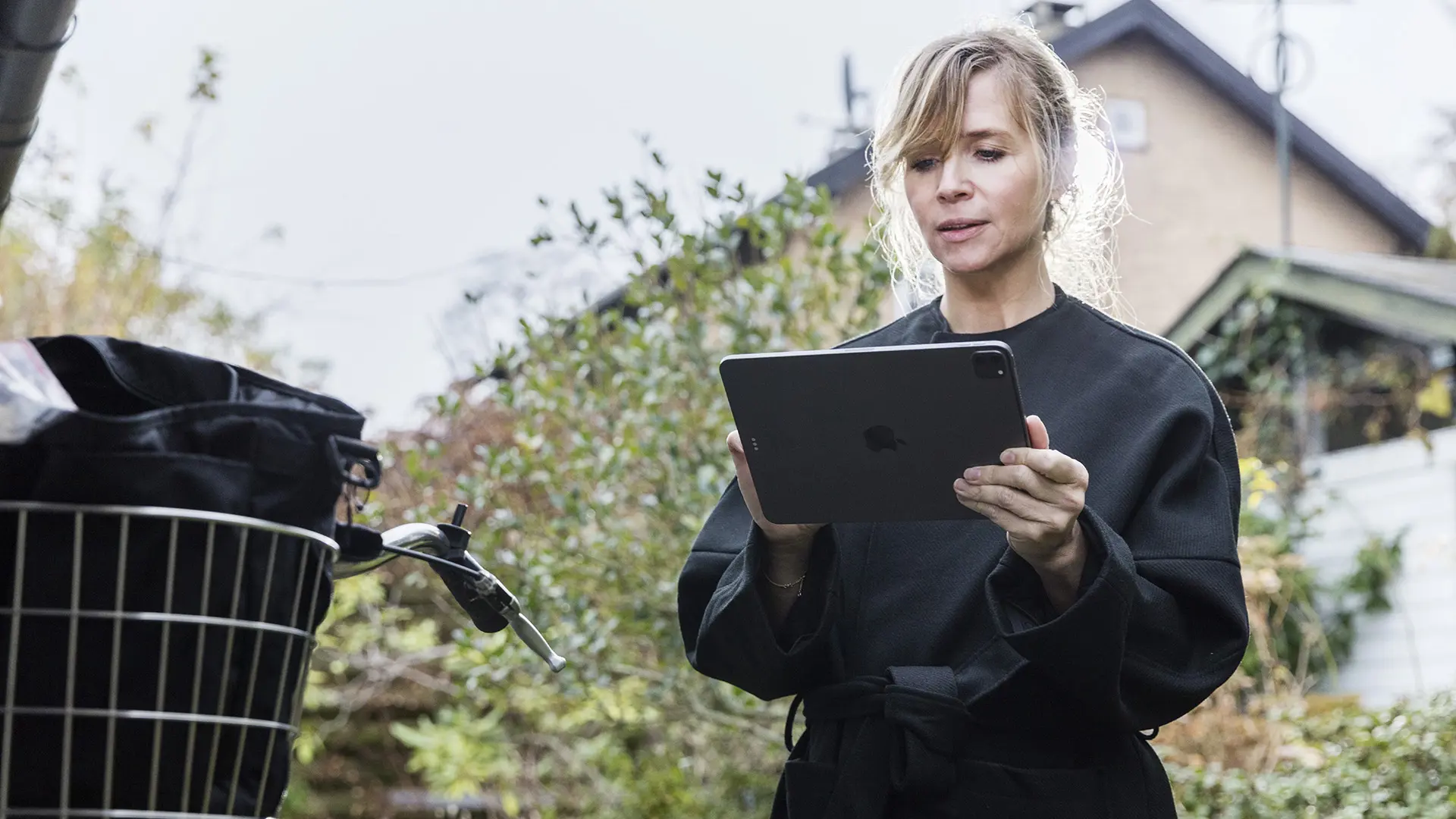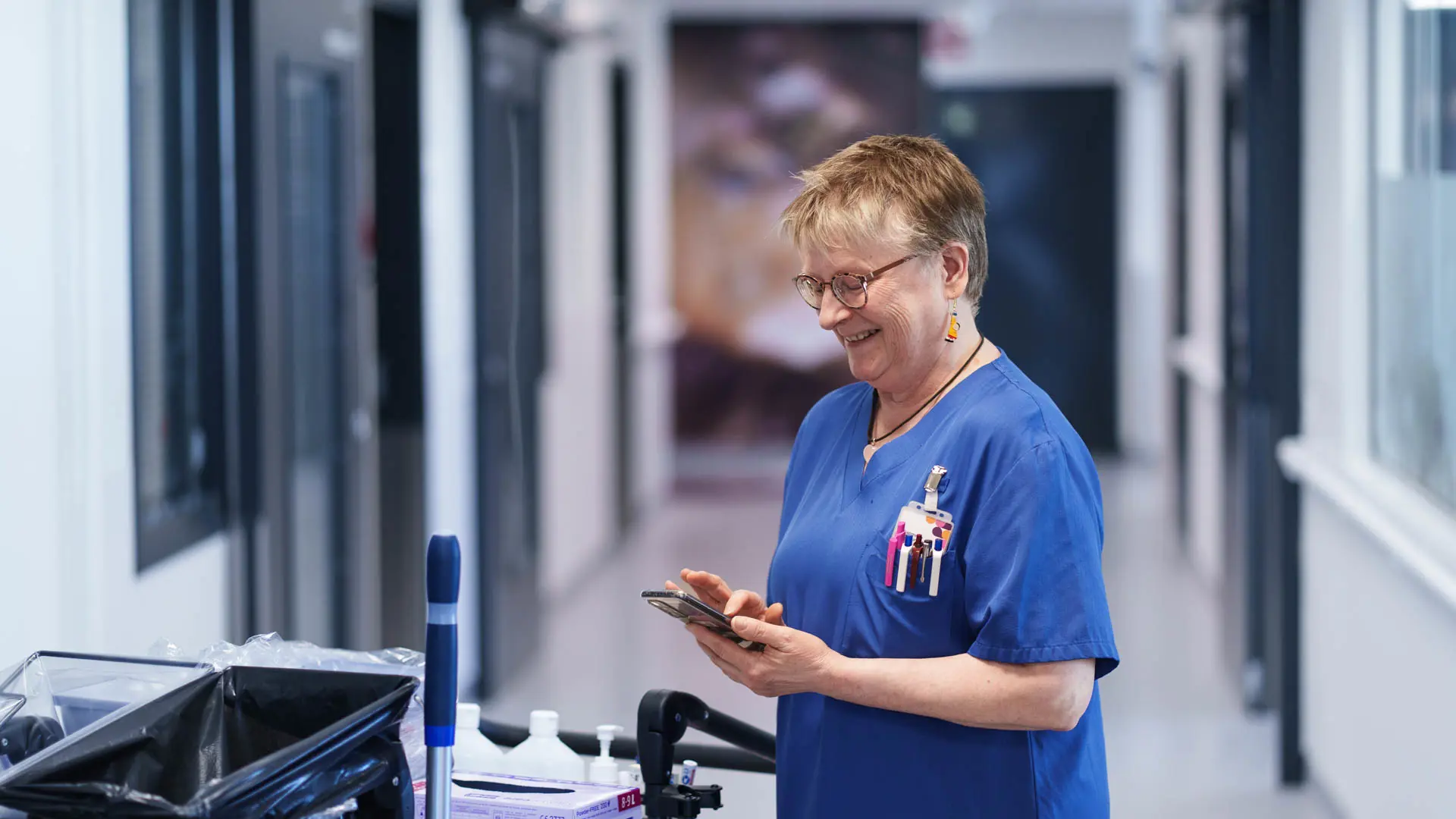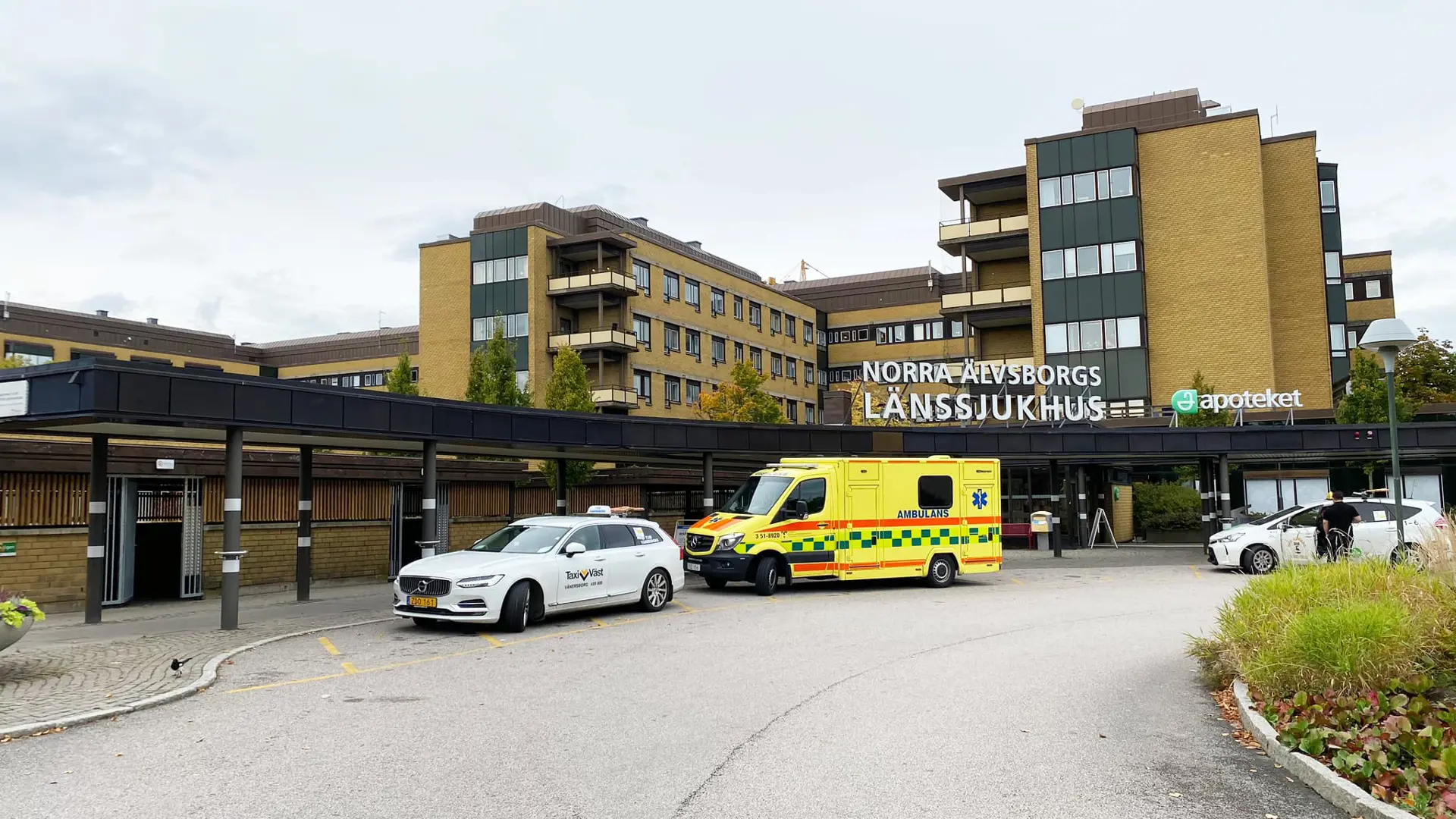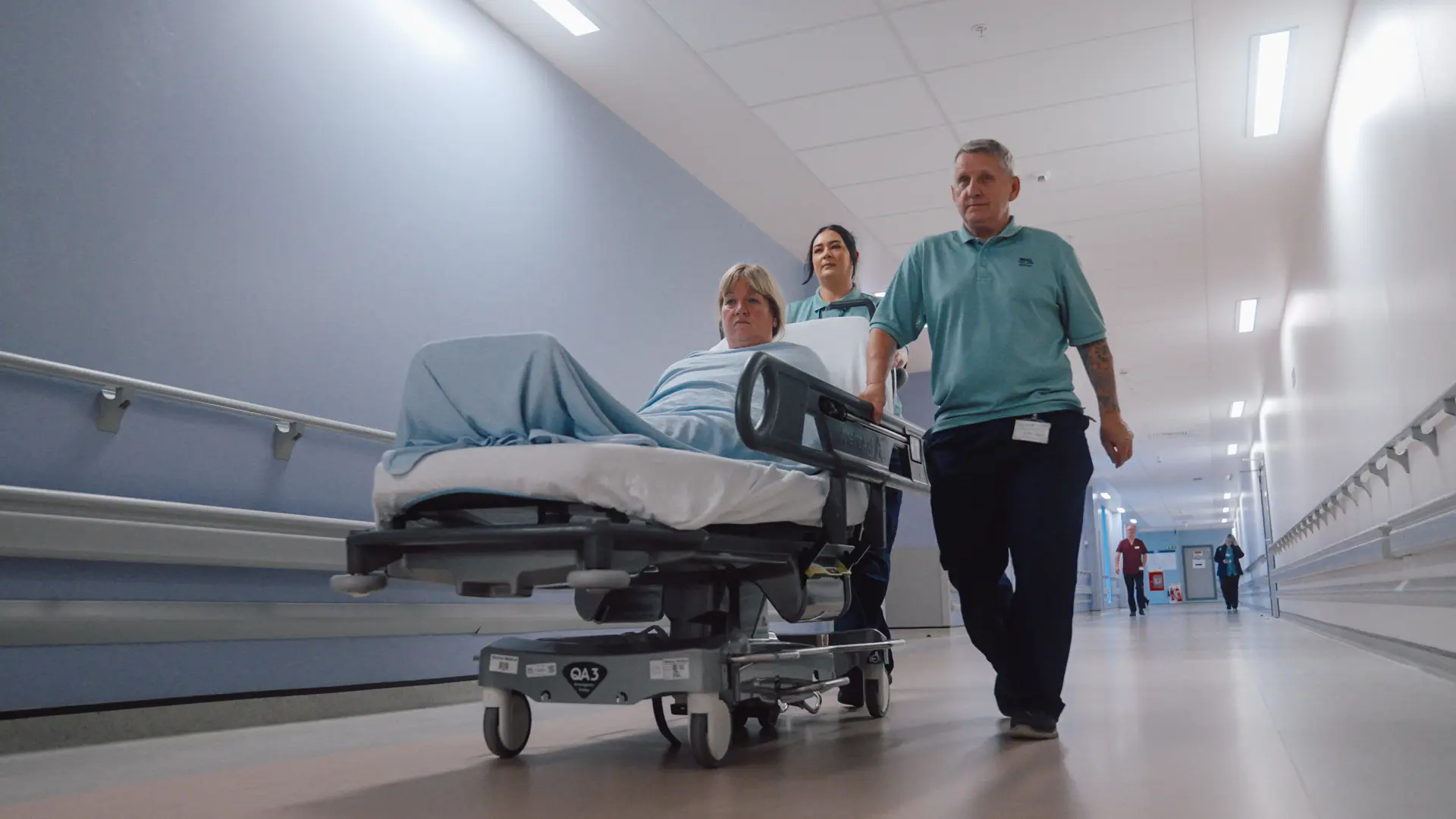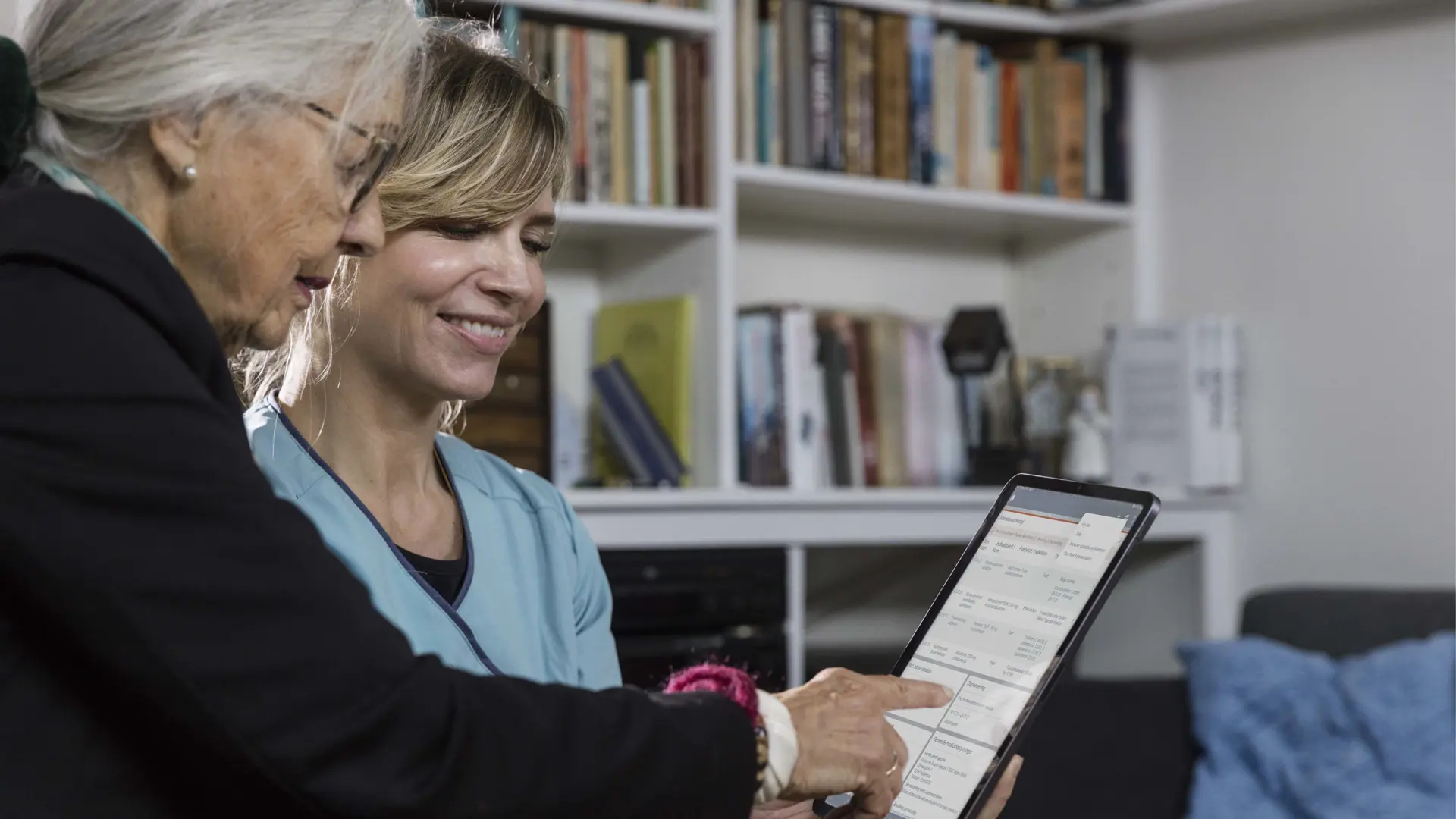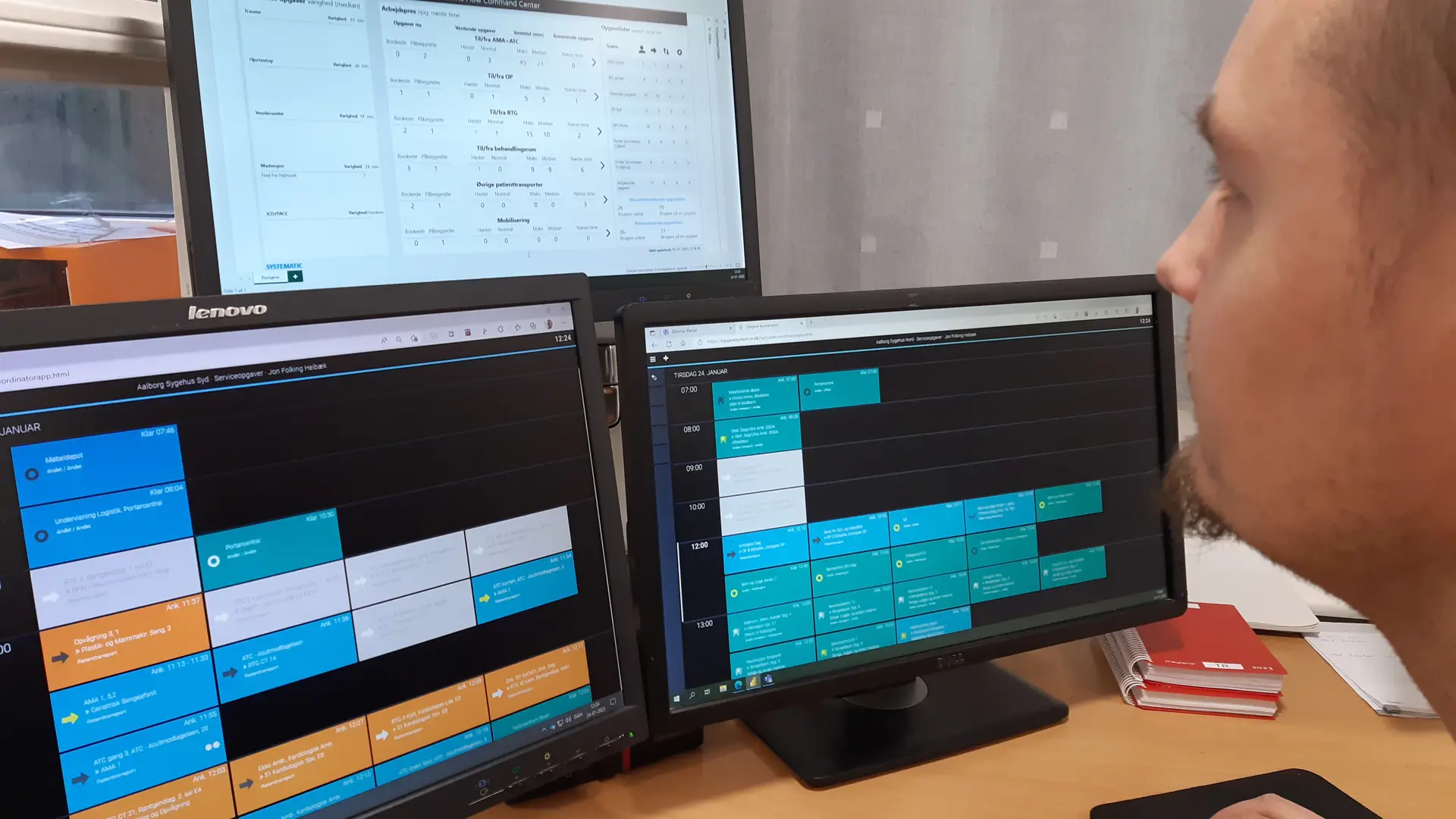Increased employee pride after digitalisation of cleaning tasks
Regional Hospital Randers has trialled the task management system Columna Flow Task Management for handling cleaning tasks on selected hospital wards. After only four months, employees enjoy higher levels of job satisfaction because the tasks are gathered in one place, thus making it easier to plan and complete the day’s tasks.
Digital structure for tasks across functions
With almost 2,000 employees, Regional Hospital Randers covers the entire north-east part of Central Denmark Region and handles 200,000 treatments a year. The service assistants at the regional hospital are responsible for cleaning and patient logistics tasks such as mobilisation, patient transport and other patient-related service tasks.
Since 2014, the service assistants have used the digital task management system Columna Flow Task Management for handling the hospital portering tasks, and it made perfect sense to include the cleaning tasks in the same system. Therefore, in July 2021, the hospital initiated a trial of the Columna Flow Task Management solution for handling the cleaning tasks in Psychiatric ward D, in the A&E department, for bed-making and in other selected clinics and wards.
Greater sense of pride and optimised workflows through documentation
During the trial, the existing cleaning plans were imported directly into the task management system, so that everything was digitally accessible and the individual tasks under each cleaning plan were distributed to the service assistants’ handsets (work phones). In addition to giving the service assistants a transparent overview of the day’s tasks, Columna Flow Task Management also procured data for the individual cleaning tasks such as the number of tasks, the duration of the tasks and the time at which the tasks were performed.
“It creates a sense of pride when the work can be documented, so management can see how long we actually spend cleaning in the course of a working day. At the same time, the digital overview has made it far easier to cover for each other in the event of illness, because the service assistants can log in to several cleaning plans,” says Henriette Lund Larsen.
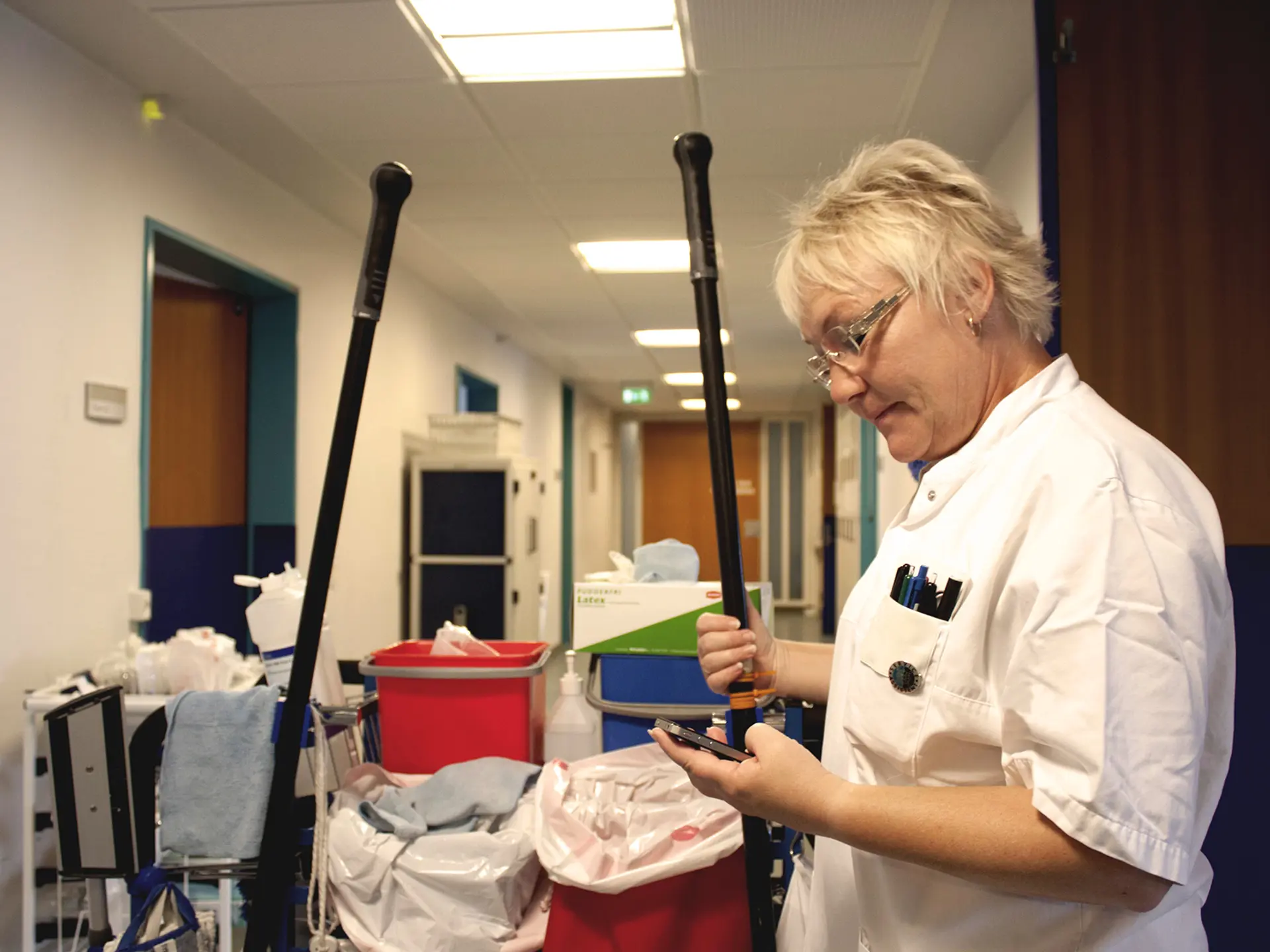
The regional hospital has established a dedicated coordinator display that shows the day’s cleaning plans and makes it easy to see whether employees have registered for all the plans and outstanding tasks. Having access to data makes it possible for the hospital to identify peak periods and to optimise the work procedures, enabling progress to be made with all the tasks, irrespective of function. The hospital has not been able to access this overview until now, because previously the cleaning plans were simply printouts of the day’s tasks attached to the individual cleaning carts.
The plan is to extend the digitalisation of cleaning tasks to the rest of Regional Hospital Randers during 2022.
Several ways to organise cleaning tasks
At the vast majority of hospitals, the cleaning work is performed either by cleaning assistants or service assistants, who in addition to cleaning are also responsible for patient logistics tasks, like at Regional Hospital Randers. At Aalborg University Hospital, which has also implemented the Columna Flow Task Management solution for handling cleaning tasks, the cleaning work is performed by dedicated cleaners.
Aalborg University Hospital
- All cleaning plans in a single task list
Regional Hospital Randers
- Individual cleaning plans with specific tasks
- And a joint task list with ad hoc tasks
At Aalborg University Hospital, it was decided to collate all the cleaning plans from the same ward in a single task list so that all the cleaning assistants attached to the ward are able to pick tasks from the same list and help each other to complete the day’s cleaning work. At Regional Hospital Randers, each service assistant has their regular cleaning plan with specific tasks, but they also have access to a joint task list with ad hoc tasks, which includes portering and cleaning.
The fact that several service assistants can continuously register for tasks reduces the amount of waiting time for ad hoc tasks such as cleaning after COVID-19 isolation, operations or cleaning on maternity wards. Aalborg University Hospital is in the process of testing a prototype for quick booking of ad hoc cleaning tasks via a wall-mounted button or by scanning NFC tags in the room in need of cleaning. This will cut waiting times further and optimise hospital cleaning flows.
The digitalisation of cleaning tasks at Regional Hospital Randers and Aalborg University Hospital has shown that it makes sense to use different implementation tactics to adapt the solution in the best possible way to the individual hospital.
What’s best for your hospital?
Please get in touch if you would like us to help you digitalise the cleaning tasks at your hospital. We will advise you on the right organisation and groupings to best suit the needs of your service and cleaning function.
Facts about the trial
- Regional Hospital Randers is a workplace for almost 2,000 employees and carries out more than 200,000 treatments a year.
- The trial took place at Psychiatric ward D, in the A&E department, for bed-making and in other selected clinics and bed wards in July 2021.
- The plan is to extend the digitalisation to the rest of the hospital in 2022.
Latest cases
Our solutions and services make a difference to our customers. Take a look at our cases and find inspiration in the benefits others have realised.

